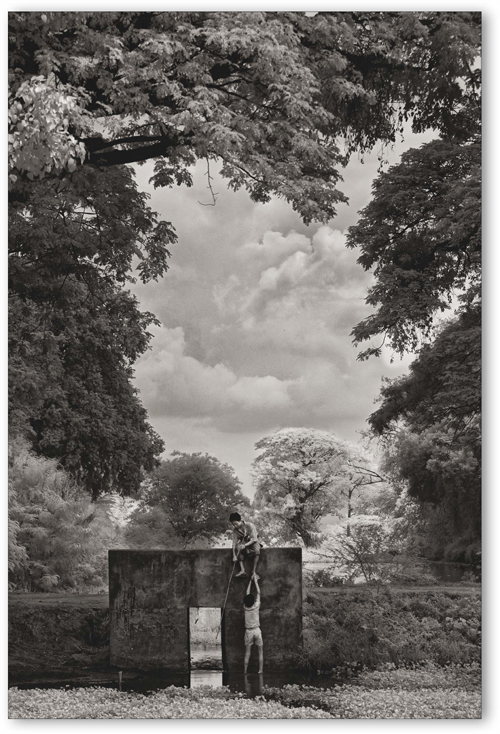Last Words: From There to Here—Where We Are on the RGB Road

Art washes away from the soul the dust of everyday life.
—Pablo Picasso
I have spent a great deal of time discussing the techniques for taking a color image on the journey to becoming a chromatic grayscale one. The techniques in this book are the bricks of the RGB road that you walk on your path of creative expression. But technique does not define the photograph, the photographer does. The final image is a reflection of a moment in time that was so important that it compelled the photographer to capture it.
There is no such thing as the perfect photograph; the perfect photograph is an ideal that each photographer holds within and no two photographers define perfection in the same way. Once you come to that understanding, the reason for striving to perfect your technique and the reason you create images becomes clear; to move and, perhaps, please the viewer. The first viewer is really the only one who matters, because that first viewer is always you. The techniques that you use are the tools that help your artistic voice be better heard. Creative voice always trumps technique, but a creative voice without technique is a voice that may never be heard.
I believe that I know enough about Photoshop to say that I understand it, but you need not understand all its technical aspects to express yourself artistically using photography as your art form. To reiterate—technique does not define your image; you define it. Once you have determined that definition, then you decide upon which techniques best suit the requirements that you have for that image so that it expresses your voice.
Photography is the only art form in which many artists first fall in love with an image, and then spend the rest of their time pursuing its technical aspects, as if it is there that they will find the secret to successful imagery. Painters do not have Popular Paint Brush magazine, and sculptors do not go to Chisel World and sit around discussing bit depth. Too many photographers appear to believe that if they attempt to make their images technically perfect that they will have perfect images. Ansel Adams said, “I would rather have a fuzzy photograph of a sharp idea than a sharp photograph of a fuzzy idea.”
What is often overlooked is the importance of imagination over technique. Cartier-Bresson said, “Give me inspiration over information.” I suppose it is okay to pursue the technical aspects of any art to the point where there is no technical rock left unturned, but never at the expense of your vision, voice, and imagination.
To better understand the imagination’s importance to photography, you must first understand the duality of existence that occurs when you are so taken by a series of events that that they lead you to that moment that causes you to click the shutter. The duality of existence refers to the fact that you must allow yourself to engage in a poetic way of seeing, but you must also be aware of how you might express that poetry in a photograph; something that has technical ramifications. During every moment that the photographer is engaged in allowing the image to take him/her, they must be aware of both the external circumstances (those that surround the totality of the photograph) and the inner chain of emotional moments that captures both their heart and imagination.
It is through the use of imagination that the photographer accomplishes the duality that I have described. Imagination allows the photographer to make a mental picture of what he/she emotionally perceives to be the final print. And it is that emotion that, when successfully communicated, will move the viewer.
As with every other artistic photographic impulse, imagination cannot be forced, only coaxed. When one pursues only the technical aspects of photography, one forces something that needs to be allowed to choose the moment in which it will be seen. On the other hand, a photographer must not be simply a spectator. To be taken by a photograph requires that you be an open and active participant in the moment, so that when the decisive moment shows itself, you can capture that moment decisively. Even if you do not know what you are going to do technically with the file that you create, you must be confident that you will discover what you need to know. Being taken by the gesture of the moment is the goal, so let the spirit that moves in front of the camera be the force that pushes the shutter. Choose to be open to everything that you do; to every moment that you live, because if you move through the world of photography this way, when you see the moment, its poetry will whisper its name and the pictures that you see will take you.